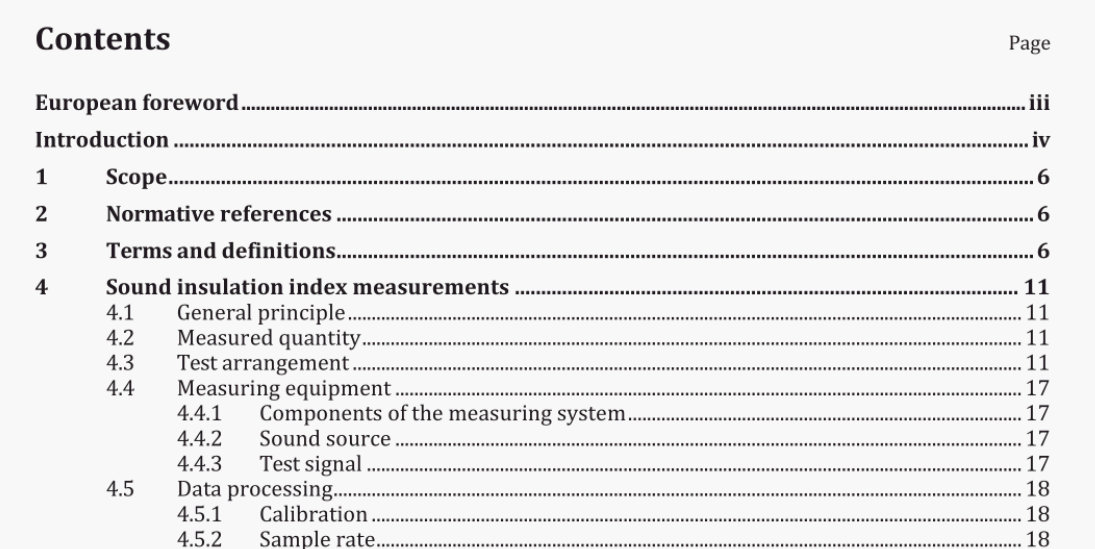BS EN 1793-6:2018 pdf download.Road traffic noise reducing devices – Test method for determining the acoustic performance
1 Scope
This document describes a test method for measuring a quantity representative of the intrinsic characteristics of airborne sound insulation for traffic noise reducing devices: the sound insulation index. The test method is intended for the following applications determination of the intrinsic characteristics of airborne sound insulation of noise reducing devices to be installed along roads, to be measured either in situ or in laboratory conditions; determination of the in situ intrinsic characteristics of airborne sound insulation of noise reducing devices in actual use; comparison of design specifications with actual performance data after the completion of the construction work; verification of the long term performance of noise reducing devices (with a repeated application of the method); -interactive design process of new products, including the formulation of installation manuals. The test method is not intended for the determination of the intrinsic characteristics of airborne sound insulation of noise reducing devices to be installed in reverberant conditions, e.g. inside tunnels or deep trenches or under covers. Results are expressed as a function of frequency in one – third octave bands, where possible, between 100 Hz and 5 kHz. If it is not possible to get valid measurement results over the whole frequency range indicated, the results will be given in a restricted frequency range and the reasons for the restriction(s) will be clearly reported.
4 Sound insulation index measurements
4.1 General principle
The sound source emits a transient sound wave that travels toward the device under test and is partly reflected, partly transmitted and partly diffracted by it. The microphone placed on the other side of the device under test receives both the transmitted sound pressure wave travelling from the sound source through the device under test, and the sound pressure wave diffracted by the top edge of the device under test (for the test to be meaningful the diffraction from the lateral edges should be sufficiently delayed]. If the measurement is repeated without the device under test between the loudspeaker and the microphone, the direct free-field wave can be acquired. The power spectra of the direct wave and the transmitted wave give the basis for calculating the sound insulation index. The sound insulation index shall be the logarithmic average of the values measured at nine points placed on the measurement grid (scanning points ). See Figure 3 and Formula (1]. The measurement shall take place in a sound field free from reflections within the Adrienne temporal window. For this reason, the acquisition of an impulse response having peaks as sharp as possible is recommended: in this way, the reflections coming from other surfaces can be identified from their delay time and rejected.
BS EN 1793-6:2018 pdf download
